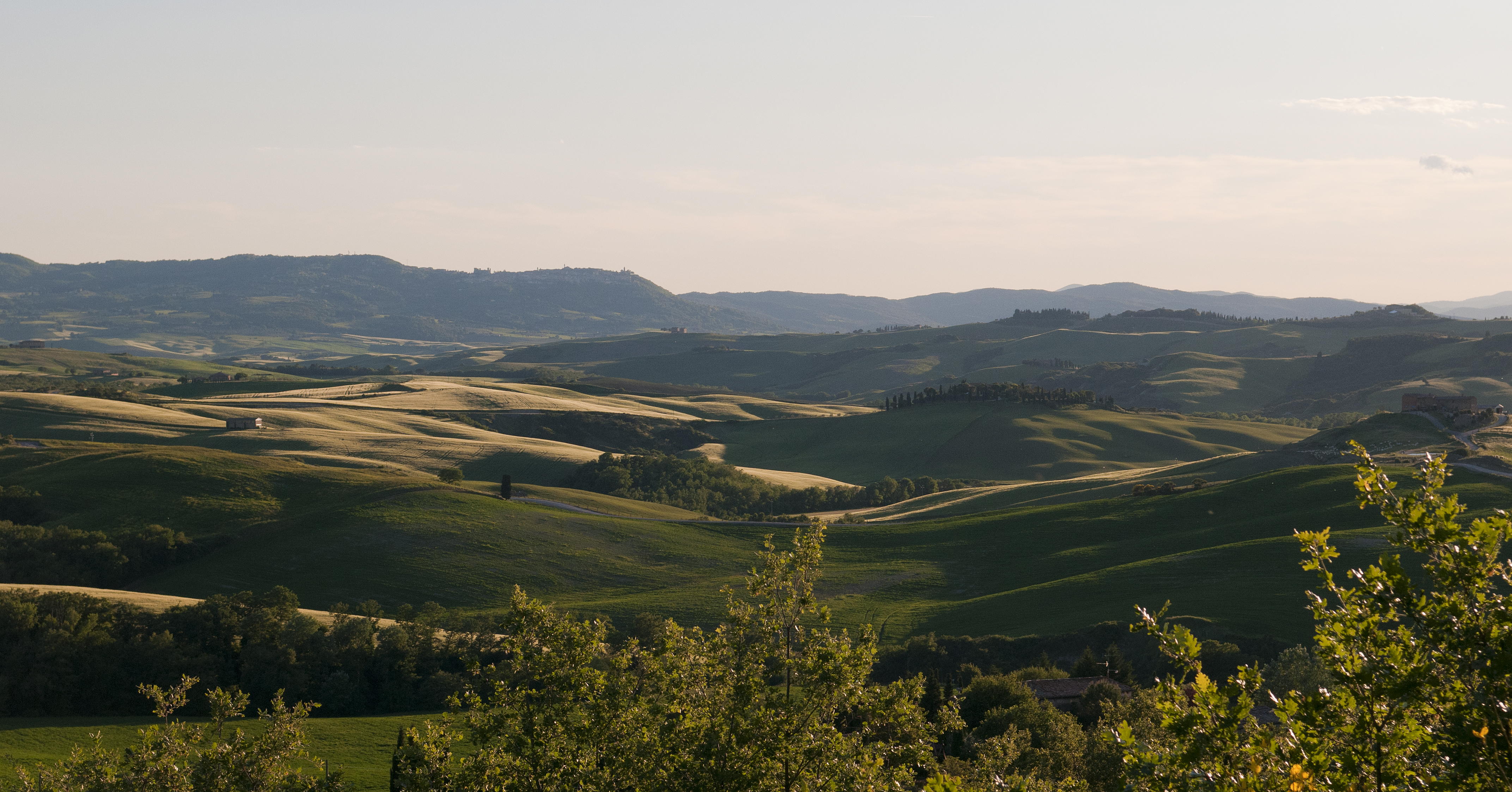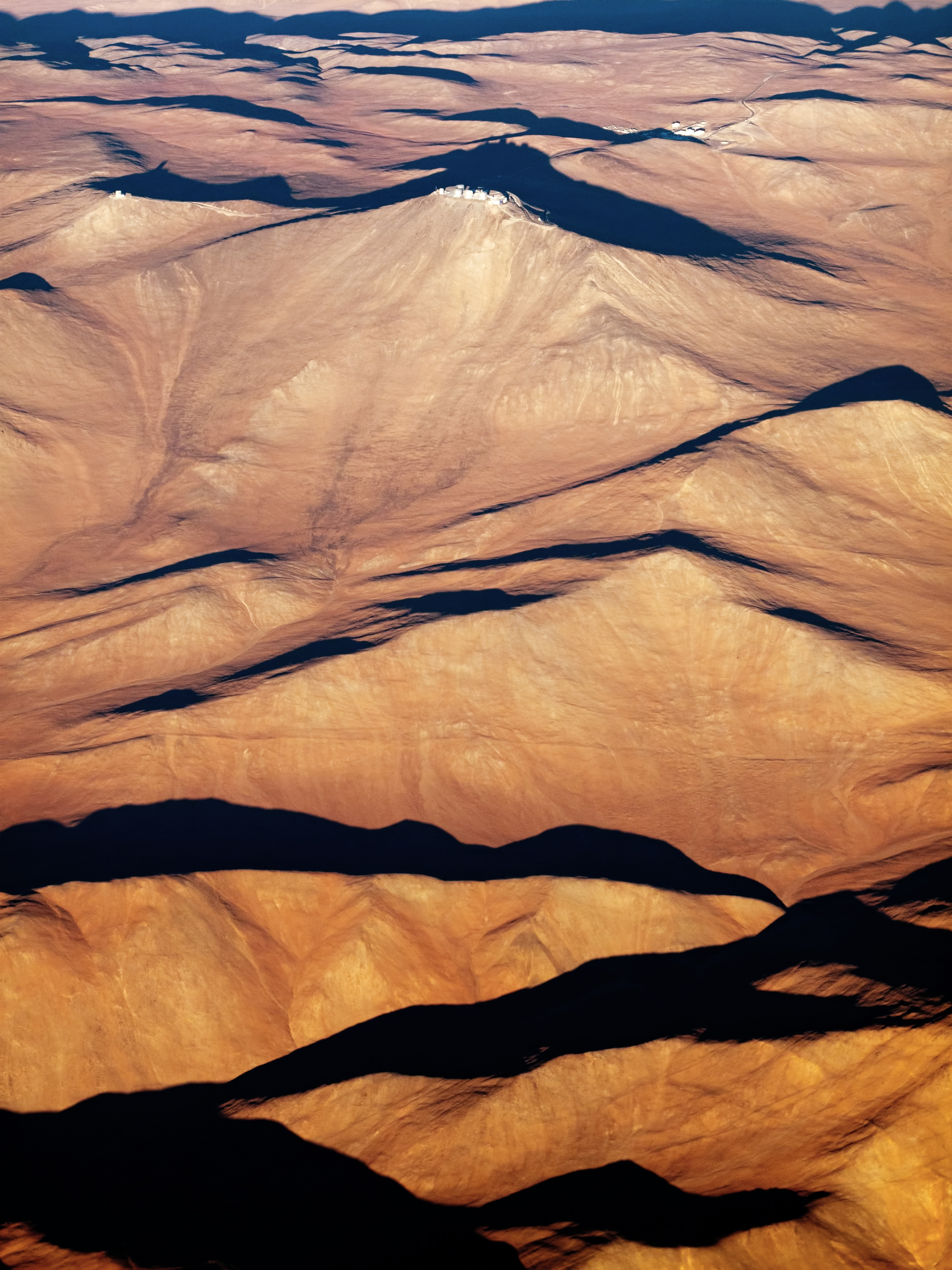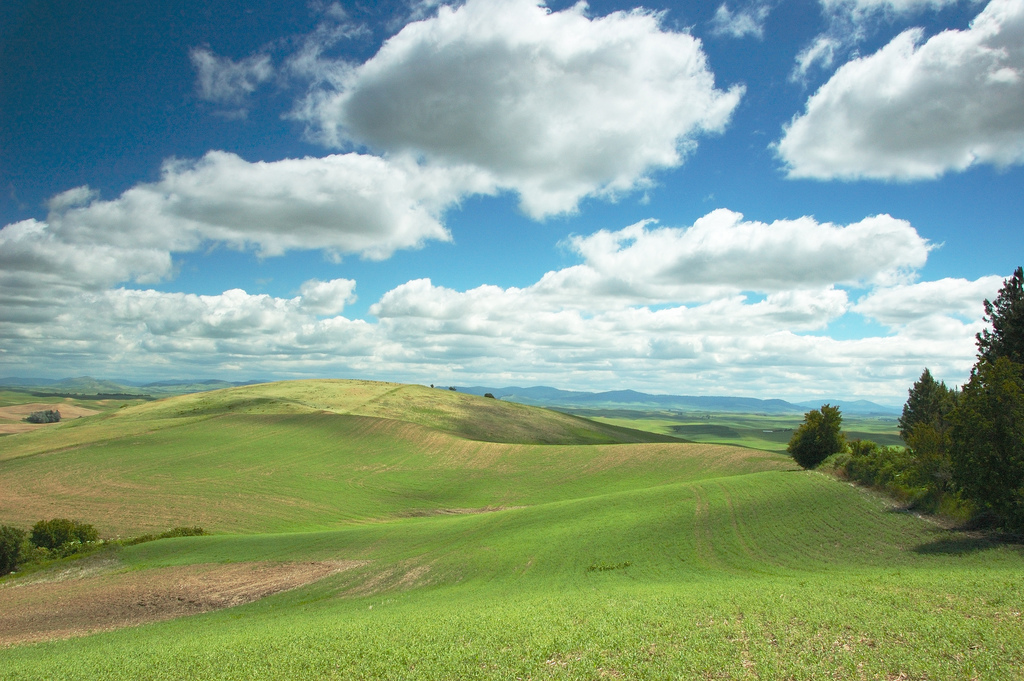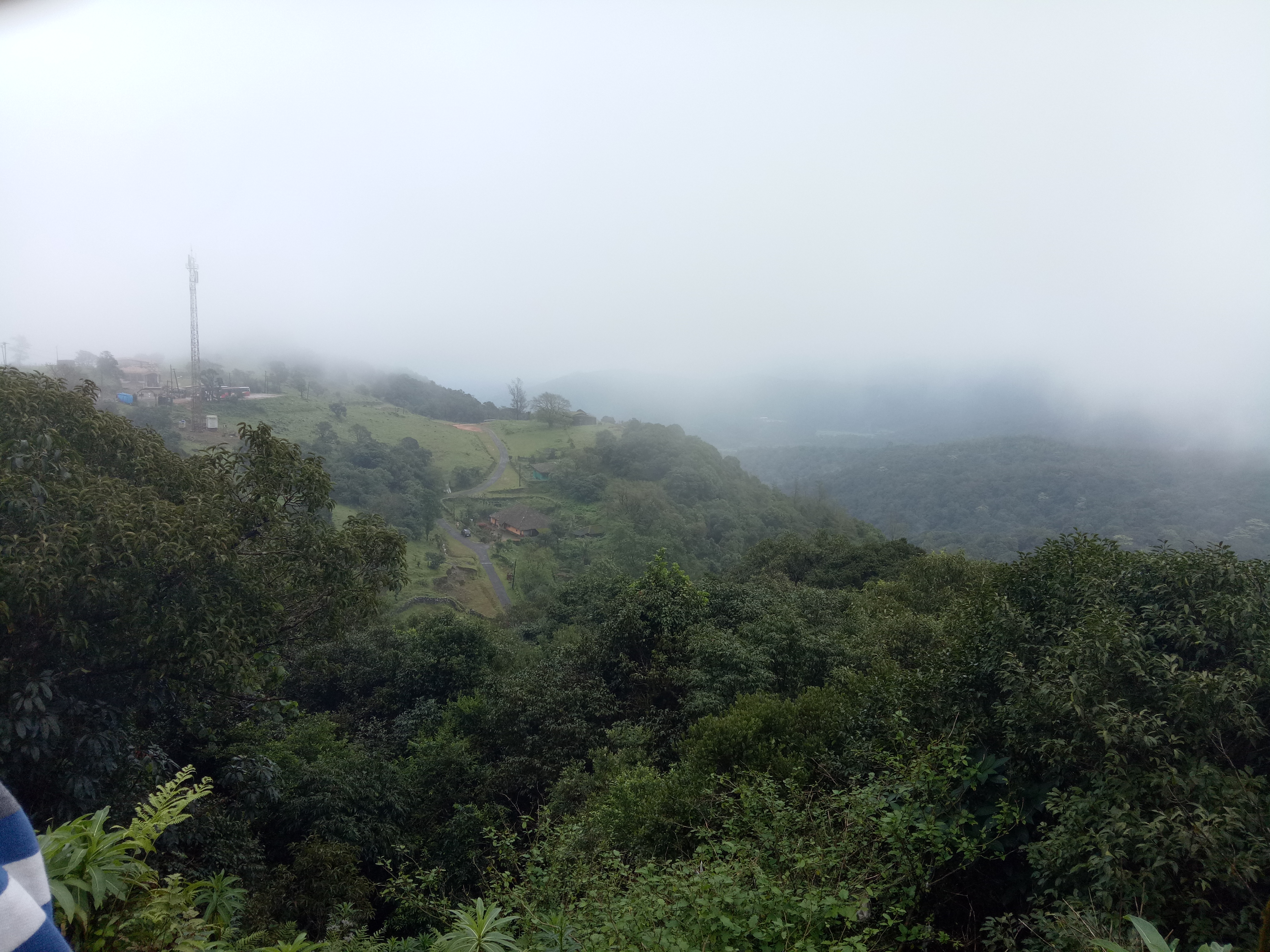Hill on:
[Wikipedia]
[Google]
[Amazon]
 A hill is a landform that extends above the surrounding terrain. It often has a distinct summit.
A hill is a landform that extends above the surrounding terrain. It often has a distinct summit.


 The distinction between a hill and a
The distinction between a hill and a  For a while, the US defined a mountain as being or more tall. Any similar landform lower than this height was considered a hill. The
For a while, the US defined a mountain as being or more tall. Any similar landform lower than this height was considered a hill. The  Hills may form through geomorphic phenomena: faulting,
Hills may form through geomorphic phenomena: faulting,

 Many settlements were originally built on hills, either to avoid floods (particularly if they were near a large body of water), for defense (since they offer a good view of the surrounding land and require would-be attackers to fight uphill), or to avoid densely forested areas. For example,
Many settlements were originally built on hills, either to avoid floods (particularly if they were near a large body of water), for defense (since they offer a good view of the surrounding land and require would-be attackers to fight uphill), or to avoid densely forested areas. For example,
 Hills provide a major advantage to an army, giving them an elevated firing position and forcing an opposing army to charge uphill to attack a fort or other position. They may also conceal forces behind them, allowing a force to lie in wait on the crest of a hill, using that crest for cover, and firing on unsuspecting attackers as they broach the hilltop. As a result, conventional military strategies often demand possession of high ground.
Hills have been the sites of many noted battles, such as the Battle of Alesia in 52 BC and the first recorded military conflict in Scotland, the Battle of Mons Graupius in AD 83. Modern era conflicts include the 1775 Battle of Bunker Hill (which was actually fought on Breed's Hill) in the American War of Independence; and
Hills provide a major advantage to an army, giving them an elevated firing position and forcing an opposing army to charge uphill to attack a fort or other position. They may also conceal forces behind them, allowing a force to lie in wait on the crest of a hill, using that crest for cover, and firing on unsuspecting attackers as they broach the hilltop. As a result, conventional military strategies often demand possession of high ground.
Hills have been the sites of many noted battles, such as the Battle of Alesia in 52 BC and the first recorded military conflict in Scotland, the Battle of Mons Graupius in AD 83. Modern era conflicts include the 1775 Battle of Bunker Hill (which was actually fought on Breed's Hill) in the American War of Independence; and

 Hillwalking is a
Hillwalking is a
File:Snow at Paranal Observatory.jpg, Cerro Paranal in Chile is a privileged place for astronomical observation, and home of ESO's telescopes.
File:One_Tree_Hill_Auckland._(8953921433).jpg, Maungakiekie / One Tree Hill is a prominent feature of the skyline of
Earth Sculpture; Or, The Origin of Land-forms
The International Geography
{{Authority control Slope landforms
 A hill is a landform that extends above the surrounding terrain. It often has a distinct summit.
A hill is a landform that extends above the surrounding terrain. It often has a distinct summit.
Terminology

 The distinction between a hill and a
The distinction between a hill and a mountain
A mountain is an elevated portion of the Earth's crust, generally with steep sides that show significant exposed bedrock. Although definitions vary, a mountain may differ from a plateau in having a limited summit area, and is usually higher ...
is unclear and largely subjective, but a hill is universally considered to be not as tall, or as steep as a mountain.
Geographers historically regarded mountains as hills greater than above sea level
Mean sea level (MSL, often shortened to sea level) is an average surface level of one or more among Earth's coastal bodies of water from which heights such as elevation may be measured. The global MSL is a type of vertical datuma standardis ...
, which formed the basis of the plot of the 1995 film ''The Englishman who Went up a Hill but Came down a Mountain
''The Englishman who Went up a Hill but Came down a Mountain'' is a 1995 romantic comedy film with a story by Ifor David Monger and Ivor Monger, written and directed by Christopher Monger. It was entered into the 19th Moscow International Film ...
''. In contrast, hillwalkers have tended to regard mountains as peaks above sea level. The ''Oxford English Dictionary
The ''Oxford English Dictionary'' (''OED'') is the first and foundational historical dictionary of the English language, published by Oxford University Press (OUP). It traces the historical development of the English language, providing a c ...
'' also suggests a limit of and Whittow states "Some authorities regard eminences above as mountains, those below being referred to as hills." Today, a mountain is usually defined in the UK and Ireland as any summit at least high, while the official UK government's definition of a mountain is a summit of or higher. Some definitions include a topographical prominence requirement, typically or . In practice, mountains in Scotland
Scotland (, ) is a country that is part of the United Kingdom. Covering the northern third of the island of Great Britain, mainland Scotland has a border with England to the southeast and is otherwise surrounded by the Atlantic Ocean to ...
are frequently referred to as "hills" no matter what their height, as reflected in names such as the Cuillin
The Cuillin ( gd, An Cuiltheann) is a range of mostly jagged rocky mountains on the Isle of Skye in Scotland. The main Cuillin ridge is also called the Black Cuillin to distinguish it from the Red Cuillin ('), which lie to the east of Glen Sli ...
Hills and the Torridon Hills. In Wales, the distinction is more a term of land use and appearance and has nothing to do with height.
 For a while, the US defined a mountain as being or more tall. Any similar landform lower than this height was considered a hill. The
For a while, the US defined a mountain as being or more tall. Any similar landform lower than this height was considered a hill. The United States Geological Survey
The United States Geological Survey (USGS), formerly simply known as the Geological Survey, is a scientific agency of the United States government. The scientists of the USGS study the landscape of the United States, its natural resources, ...
, however, has concluded that these terms do not in fact have technical definitions in the US
The ''Great Soviet Encyclopedia
The ''Great Soviet Encyclopedia'' (GSE; ) is one of the largest Russian-language encyclopedias, published in the Soviet Union from 1926 to 1990. After 2002, the encyclopedia's data was partially included into the later ''Bolshaya rossiyskaya e ...
'' defined "hill" as an upland with a relative height
In topography, prominence (also referred to as autonomous height, relative height, and shoulder drop in US English, and drop or relative height in British English) measures the height of a mountain or hill's summit relative to the lowest conto ...
up to .
A hillock is a small hill. Other words include knoll and (in Scotland, Northern Ireland and northern England) its variant, knowe. Artificial hills may be referred to by a variety of technical names, including mound
A mound is a heaped pile of earth, gravel, sand, rocks, or debris. Most commonly, mounds are earthen formations such as hills and mountains, particularly if they appear artificial. A mound may be any rounded area of topographically highe ...
and tumulus
A tumulus (plural tumuli) is a mound of earth and stones raised over a grave or graves. Tumuli are also known as barrows, burial mounds or '' kurgans'', and may be found throughout much of the world. A cairn, which is a mound of stones ...
.
 Hills may form through geomorphic phenomena: faulting,
Hills may form through geomorphic phenomena: faulting, erosion
Erosion is the action of surface processes (such as water flow or wind) that removes soil, rock, or dissolved material from one location on the Earth's crust, and then transports it to another location where it is deposited. Erosion is d ...
of larger landforms such as mountains and movement and deposition of sediment
Sediment is a naturally occurring material that is broken down by processes of weathering and erosion, and is subsequently transported by the action of wind, water, or ice or by the force of gravity acting on the particles. For example, sand ...
by glacier
A glacier (; ) is a persistent body of dense ice that is constantly moving under its own weight. A glacier forms where the accumulation of snow exceeds its ablation over many years, often centuries. It acquires distinguishing features, such a ...
s (notably moraines and drumlin
A drumlin, from the Irish word ''droimnín'' ("littlest ridge"), first recorded in 1833, in the classical sense is an elongated hill in the shape of an inverted spoon or half-buried egg formed by glacial ice acting on underlying unconsolidated ...
s or by erosion exposing solid rock which then weathers down into a hill). The rounded peaks of hills results from the diffusive movement of soil
Soil, also commonly referred to as earth or dirt, is a mixture of organic matter, minerals, gases, liquids, and organisms that together support life. Some scientific definitions distinguish ''dirt'' from ''soil'' by restricting the former ...
and regolith covering the hill, a process known as downhill creep.
Various names may be used to describe types of hills, based on appearance and method of formation. Many such names originated in one geographical region to describe a type of hill formation peculiar to that region, though the names are often adopted by geologist
A geologist is a scientist who studies the solid, liquid, and gaseous matter that constitutes Earth and other terrestrial planets, as well as the processes that shape them. Geologists usually study geology, earth science, or geophysics, althou ...
s and used in a wider geographical context. These include:
* Brae – Scots, Ulster, and North of England term for a hillside or brow of a hill.
* Drumlin
A drumlin, from the Irish word ''droimnín'' ("littlest ridge"), first recorded in 1833, in the classical sense is an elongated hill in the shape of an inverted spoon or half-buried egg formed by glacial ice acting on underlying unconsolidated ...
– an elongated whale-shaped hill formed by glacial action.
* Butte
__NOTOC__
In geomorphology, a butte () is an isolated hill with steep, often vertical sides and a small, relatively flat top; buttes are smaller landforms than mesas, plateaus, and tablelands. The word ''butte'' comes from a French word me ...
– an isolated hill with steep sides and a small flat top, formed by weathering
Weathering is the deterioration of rocks, soils and minerals as well as wood and artificial materials through contact with water, atmospheric gases, and biological organisms. Weathering occurs '' in situ'' (on site, with little or no movement ...
.
* '' Kuppe'' – a rounded hill or low mountain, typical of Central Europe
Central Europe is an area of Europe between Western Europe and Eastern Europe, based on a common historical, social and cultural identity. The Thirty Years' War (1618–1648) between Catholicism and Protestantism significantly shaped the a ...
.
* Tor – a rock formation found on a hilltop; also used to refer to the hill, especially in South West England and the Peak District.
* Puy – used especially in the Auvergne
Auvergne (; ; oc, label= Occitan, Auvèrnhe or ) is a former administrative region in central France, comprising the four departments of Allier, Puy-de-Dôme, Cantal and Haute-Loire. Since 1 January 2016, it has been part of the new region Au ...
, France
France (), officially the French Republic ( ), is a country primarily located in Western Europe. It also comprises of Overseas France, overseas regions and territories in the Americas and the Atlantic Ocean, Atlantic, Pacific Ocean, Pac ...
, to describe a conical volcanic
A volcano is a rupture in the crust of a planetary-mass object, such as Earth, that allows hot lava, volcanic ash, and gases to escape from a magma chamber below the surface.
On Earth, volcanoes are most often found where tectonic plat ...
hill.
* Pingo – a mound of earth-covered ice found in the Arctic
The Arctic ( or ) is a polar regions of Earth, polar region located at the northernmost part of Earth. The Arctic consists of the Arctic Ocean, adjacent seas, and parts of Canada (Yukon, Northwest Territories, Nunavut), Danish Realm (Greenla ...
and Antarctica
Antarctica () is Earth's southernmost and least-populated continent. Situated almost entirely south of the Antarctic Circle and surrounded by the Southern Ocean, it contains the geographic South Pole. Antarctica is the fifth-largest cont ...
.
Historical significance

 Many settlements were originally built on hills, either to avoid floods (particularly if they were near a large body of water), for defense (since they offer a good view of the surrounding land and require would-be attackers to fight uphill), or to avoid densely forested areas. For example,
Many settlements were originally built on hills, either to avoid floods (particularly if they were near a large body of water), for defense (since they offer a good view of the surrounding land and require would-be attackers to fight uphill), or to avoid densely forested areas. For example, Ancient Rome
In modern historiography, ancient Rome refers to Roman people, Roman civilisation from the founding of the city of Rome in the 8th century BC to the collapse of the Western Roman Empire in the 5th century AD. It encompasses the Roman Kingdom ...
was built on seven hills, helping to protect it from invaders.
Some settlements, particularly in the Middle East, are located on artificial hills consisting of debris (particularly mudbricks) that has accumulated over many generations. Such a location is known as a " tell".
In Northern Europe, many ancient monuments are sited in heaps. Some of these are defensive structures (such as the hillforts
A hillfort is a type of earthwork used as a fortified refuge or defended settlement, located to exploit a rise in elevation for defensive advantage. They are typically European and of the Bronze Age or Iron Age. Some were used in the post-Rom ...
of the Iron Age
The Iron Age is the final epoch of the three-age division of the prehistory and protohistory of humanity. It was preceded by the Stone Age ( Paleolithic, Mesolithic, Neolithic) and the Bronze Age ( Chalcolithic). The concept has been mostly ...
), but others appear to have hardly any significance. In Britain, many churches at the tops of hills are thought to have been built on the sites of earlier pagan holy places. The Washington National Cathedral in Washington, D.C. has followed this tradition and was built on the highest hill in that city.
Military significance
 Hills provide a major advantage to an army, giving them an elevated firing position and forcing an opposing army to charge uphill to attack a fort or other position. They may also conceal forces behind them, allowing a force to lie in wait on the crest of a hill, using that crest for cover, and firing on unsuspecting attackers as they broach the hilltop. As a result, conventional military strategies often demand possession of high ground.
Hills have been the sites of many noted battles, such as the Battle of Alesia in 52 BC and the first recorded military conflict in Scotland, the Battle of Mons Graupius in AD 83. Modern era conflicts include the 1775 Battle of Bunker Hill (which was actually fought on Breed's Hill) in the American War of Independence; and
Hills provide a major advantage to an army, giving them an elevated firing position and forcing an opposing army to charge uphill to attack a fort or other position. They may also conceal forces behind them, allowing a force to lie in wait on the crest of a hill, using that crest for cover, and firing on unsuspecting attackers as they broach the hilltop. As a result, conventional military strategies often demand possession of high ground.
Hills have been the sites of many noted battles, such as the Battle of Alesia in 52 BC and the first recorded military conflict in Scotland, the Battle of Mons Graupius in AD 83. Modern era conflicts include the 1775 Battle of Bunker Hill (which was actually fought on Breed's Hill) in the American War of Independence; and Cemetery Hill
Cemetery Hill is a landform on the Gettysburg Battlefield that was the scene of fighting each day of the Battle of Gettysburg (July 1–3, 1863). The northernmost part of the Army of the Potomac defensive " fish-hook" line, the hill is gently ...
and Culp's Hill in the 1863 Battle of Gettysburg
The Battle of Gettysburg () was fought July 1–3, 1863, in and around the town of Gettysburg, Pennsylvania, by Union and Confederate forces during the American Civil War. In the battle, Union Major General George Meade's Army of the ...
, the turning point of the American Civil War
The American Civil War (April 12, 1861 – May 26, 1865; also known by Names of the American Civil War, other names) was a civil war in the United States. It was fought between the Union (American Civil War), Union ("the North") and t ...
. The Battle of San Juan Hill in the 1898 Spanish–American War
, partof = the Philippine Revolution, the decolonization of the Americas, and the Cuban War of Independence
, image = Collage infobox for Spanish-American War.jpg
, image_size = 300px
, caption = (clock ...
won Americans control of Santiago de Cuba.
Battles for high ground have often resulted in extensive losses to both attackers and defenders, such as the 1969 Battle of Hamburger Hill
The Battle of Hamburger Hill (13–20 May 1969) was a battle of the Vietnam War that was fought by US Army and Army of the Republic of Vietnam (ARVN) forces against People's Army of Vietnam (PAVN) forces during Operation Apache Snow. Though th ...
during the Vietnam War, the Battle of Stalingrad and Battle of Peleliu during World War II
World War II or the Second World War, often abbreviated as WWII or WW2, was a world war that lasted from 1939 to 1945. It involved the World War II by country, vast majority of the world's countries—including all of the great power ...
, and the 1969 Kargil War
The Kargil War, also known as the Kargil conflict, was fought between India and Pakistan from May to July 1999 in the Kargil district of Jammu and Kashmir and elsewhere along the Line of Control (LoC). In India, the conflict is also referre ...
between India and Pakistan.
The Great Wall of China
The Great Wall of China (, literally "ten thousand ''li'' wall") is a series of fortifications that were built across the historical northern borders of ancient Chinese states and Imperial China as protection against various nomadic grou ...
is an enduring example of hilltop fortification. It was built on hilltops to help defend against invaders from the north, such as Mongols
The Mongols ( mn, Монголчууд, , , ; ; russian: Монголы) are an East Asian ethnic group native to Mongolia, Inner Mongolia in China and the Buryatia Republic of the Russian Federation. The Mongols are the principal member ...
.
Sports and games

 Hillwalking is a
Hillwalking is a British English
British English (BrE, en-GB, or BE) is, according to Oxford Dictionaries, "English as used in Great Britain, as distinct from that used elsewhere". More narrowly, it can refer specifically to the English language in England, or, more broadl ...
term for a form of hiking
Hiking is a long, vigorous walk, usually on trails or footpaths in the countryside. Walking for pleasure developed in Europe during the eighteenth century.AMATO, JOSEPH A. "Mind over Foot: Romantic Walking and Rambling." In ''On Foot: A Histor ...
which involves the ascent of hills. The activity is usually distinguished from mountaineering as it does not involve ropes or technically difficult rock climbing, although the terms mountain and hill are often used interchangeably in Britain. Hillwalking is popular in hilly areas such as the English Peak District and the Scottish Highlands. Many hills are categorized according to relative height or other criteria and feature on lists named after mountaineers, such as Munros (Scotland) and Wainwrights (England). Specific activities such as " peak bagging" (or "Munro bagging") involve climbing hills on these lists with the aim of eventually climbing every hill on the list.
Cooper's Hill Cheese-Rolling and Wake
The Cooper's Hill Cheese-Rolling and Wake is an annual event held on the Spring Bank Holiday at Cooper's Hill, near Gloucester in England. Participants race down the long hill after a round of Double Gloucester cheese is sent rolling down it. ...
is an annual event in the West Country
The West Country (occasionally Westcountry) is a loosely defined area of South West England, usually taken to include all, some, or parts of the counties of Cornwall, Devon, Dorset, Somerset, Bristol, and, less commonly, Wiltshire, Glouc ...
of England
England is a country that is part of the United Kingdom. It shares land borders with Wales to its west and Scotland to its north. The Irish Sea lies northwest and the Celtic Sea to the southwest. It is separated from continental Europe ...
which involves rolling a wheel of cheese down a hill. Contestants stand at the top and chase the wheel of cheese to the bottom. The winner, the one who catches the cheese, gets to keep the wheel of cheese as a prize.
Cross country running courses may include hills which can add diversity and challenge to those courses.
Notable artificial hills
*Sophienhöhe
The Sophienhöhe (301.8 m AMSL) is the largest artificial hill worldwide, created by surface mining at the open cast lignite mine Tagebau Hambach operated by RWE Power AG in Düren (district), North Rhine-Westphalia, Germany.
Location
Sophie ...
, Germany ()
*Monte Kaolino
Monte Kaolino is a sand dune in Hirschau, Bavaria, Germany. It consists of of sand, a by-product of kaolinite production over the years. The sand dune is now used as a ski resort for sand skiing and sandboarding, in addition to other activi ...
, Germany ()
* , Sweden ()
* Malminkartanonhuippu
Malminkartanonhuippu ( en, Malminkartano Hill, sv, Malmgårdstoppen) is an artificial hill in the district of Malminkartano in Helsinki, Finland. It is located near to the Vihti Road and the Myyrmäki district of Vantaa. With a height of appro ...
, Finland ()
* Mausoleum of the First Qin Emperor
The Mausoleum of the First Qin Emperor () is the mausoleum of Qin Shi Huang, the first emperor of the Qin dynasty. It is located in Lintong District, Xi'an, Shaanxi province of China. It was constructed over 38 years, from 246 to 208 BCE, and ...
, China ()
* Five Sisters Bing, Scotland ()
* Expedition Everest
Expedition Everest – Legend of the Forbidden Mountain is a steel roller coaster built by Vekoma at Disney's Animal Kingdom at the Walt Disney World Resort in Lake Buena Vista, Florida. The ride is themed around the Yeti protecting the Forbi ...
, Florida ()
* Monte Stella, Italy ()
* Blackstrap Ski Hill
Blackstrap Provincial Park is a provincial park in the Canadian province of Saskatchewan in the RM of Dundurn. Prior to the park's establishment in 1986, it was a provincial recreation site. The park runs along the eastern shore of Blackst ...
, Canada ()
* Jingshan Hill, China ()
* Silbury Hill, England ()
* Grizzly Peak, California ()
* Mount Manisty
Mount Manisty is a large man-made hillock located between the Manchester Ship Canal and the River Mersey northwest of Ellesmere Port in Cheshire, England. The mound, which is tall, was created from earth excavated during the building of the ship ...
, England ()
* Monks Mound, Illinois ()
* Mount Gushmore, Florida ()
Gallery
Auckland
Auckland (pronounced ) ( mi, Tāmaki Makaurau) is a large metropolitan city in the North Island of New Zealand. The most populous urban area in the country and the fifth largest city in Oceania, Auckland has an urban population of about I ...
, New Zealand.
File:Giv'at Seled, near Tzafririm.jpg, Hill in Israel
File:DirkvdM orosi hill plantation.jpg, A coffee plantation on a conical hill near Orosí
Orosi is a district of the Paraíso canton, in the Cartago province of Costa Rica.
History
Orosi is one of the oldest communities in Costa Rica. The village of Orosi was chosen, together with Ujarrás, by the Spanish conquerors to establish ...
, Costa Rica.
File:Malminkartanonhuippu4.jpg, An arrow pointing towards the top of the Malminkartanonhuippu
Malminkartanonhuippu ( en, Malminkartano Hill, sv, Malmgårdstoppen) is an artificial hill in the district of Malminkartano in Helsinki, Finland. It is located near to the Vihti Road and the Myyrmäki district of Vantaa. With a height of appro ...
hill in Helsinki, Finland.
File:Xn ant hill.jpg, An ant mound, or ant-hill
An ant colony is a population of a single ant species capable to maintain its complete lifecycle. Ant colonies are eusocial, communal, and efficiently organized and are very much like those found in other social Hymenoptera, though the var ...
, a mound sometimes casually referred to as a hill
File:تل_شمامك_الأثري_في_أربيل.jpg , The archaeological hill of Qasr shamamk in Erbil
File:تل_علياوا_(2).jpg, The archaeological hill of Aliawa in Erbil
See also
* * * * * * * * * "" * * * * * * *References
External links
Earth Sculpture; Or, The Origin of Land-forms
The International Geography
{{Authority control Slope landforms